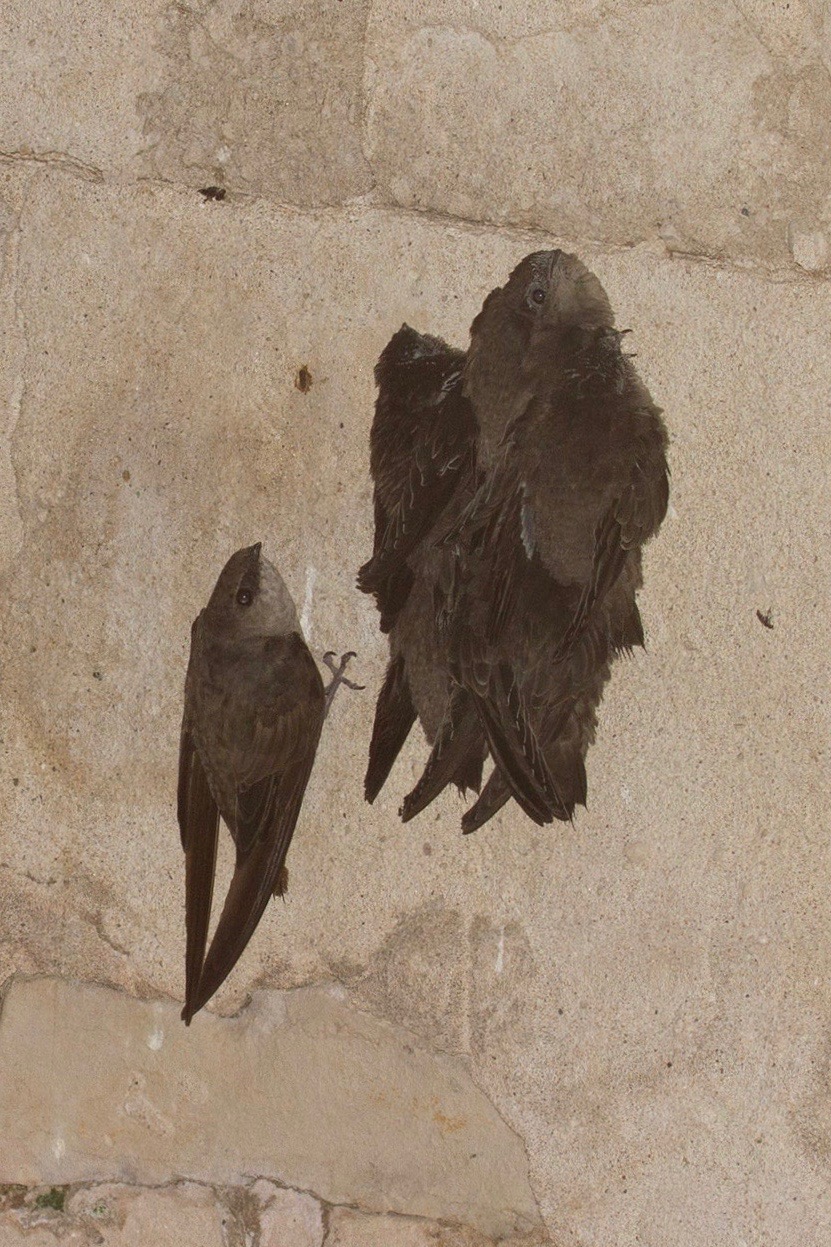Written and photo by Nancy Nabak,
Communication Coordinator
It’s not the velvet sound of Nat King Kole that I swoon over, but it is one of my all time favorite sounds. I’m listening to baby Chimney swifts chittering in our chimney at Woodland Dunes and I love it. Soon, very soon, they will fledge and the constant food-begging sound will stop. And I will miss it. I’ll miss it very much.
We’re at the time of year where fledglings are stretching their wings and moving around. This includes the maturing of Chimney swifts. And not long from now they will be congregating in numbers, some times quite impressive numbers in the hundreds or thousands, in preparation of their migration to the Amazon.
The Chimney swift belongs to a group of birds called “aerial insectivores.” This means that they eat insects while in flight. Unfortunately, Canada’s State of the Birds 2019 report just released shows a 59% decline in aerial insectivores since 1970. For complex reasons unknown, this group of birds has experienced the greatest decline of all others. Furthermore, according to the North American Breeding Bird Survey, the Chimney swift has experienced a decline of 72% from 1966 to 2015. And the numbers are not getting better.
And this is partly why I’ll miss their sound.
I’ll miss their sound because when they’re here I can hear them and I have hope. I know that this tiny little population is still doing well. I’ll miss them because bird song is one of nature’s greatest gifts. And I’ll miss them like a mother who wants to know where her child is after 10:00 at night. I’ll be hoping that they’re ok on their southern migration and that they’ll do well on their winter grounds.
Because there is so little known about a bird that nests and roosts in chimneys, it’s hard to know for sure how to protect them, but we are working on it. There is an event called Swift Night Out in the early fall to get every day people like you and me to count Chimney swifts as they enter chimneys in the early evening. It’s a simple process; you don’t need to be a bird expert to do this. All you need to do is count.
Woodland Dunes will be sponsoring a family-friendly Swift Night Out on Tuesday, August 13. We will go to a known location where hundreds of swifts have entered a chimney at dusk to roost for the night. Tracking these numbers will help us see trends and show us where to concentrate research and conservation efforts. To register to help, please contact Woodland Dunes at 920-793-4007. Again, no experience is necessary and you can help make a difference for this federally protected bird.
Tips on how and where to look for chimney swifts
Chimney swifts have a cigar-shaped body with long, narrow, curved wings. Their flight pattern is rapid, with nearly constant wing beats, often twisting from side to side and banking erratically. Many times you’ll hear them with a distinctive, high chittering call while in flight before you see them.
Because chimney swifts congregate in communal roosts before migrating in late summer/fall, it’s relatively easy to count them. Here’s how:
- Look for tall brick chimneys that are uncapped. Downtown Two Rivers and Manitowoc both have wonderful historic buildings and swifts are seen flying in those areas.
- Watch to see where swifts are feeding and congregating.
- Pick a night to go out around the 13th if you can’t join us for the sponsored event.
- Observe the roost starting about 30 minutes before sunset until 10 minutes after the last swift enters the chimney. Count (or estimate) the number of swifts that enter the chimney. It’s useful to count in groups of five or 10 when they are entering in high numbers. Turn in results to Nancy Nabak at nancyn@woodlanddunes.org.
More information about chimney swifts and how to help protect them can be found on the Wisconsin Chimney Swift Working Group website https://www.wiswifts.org/
For more information on the Swift Night Out, please contact Woodland Dunes at 920-793-4007 or email nancyn@woodlanddunes.org.
Photo of chimney swifts inside a silo wall by Nancy Nabak

